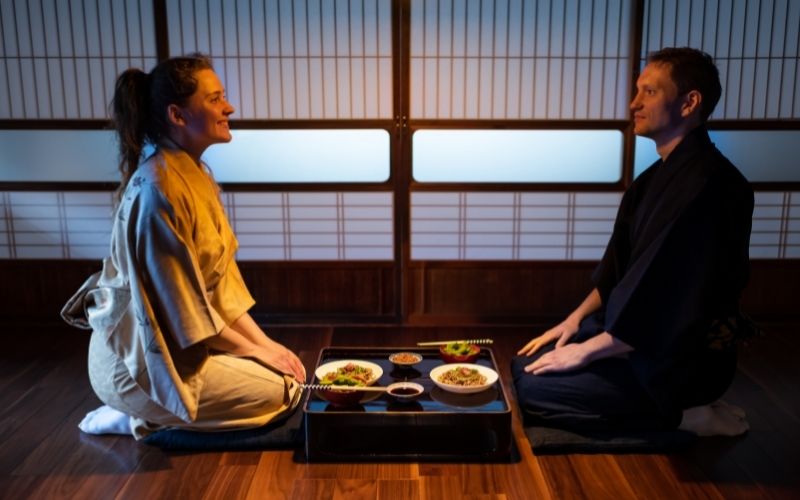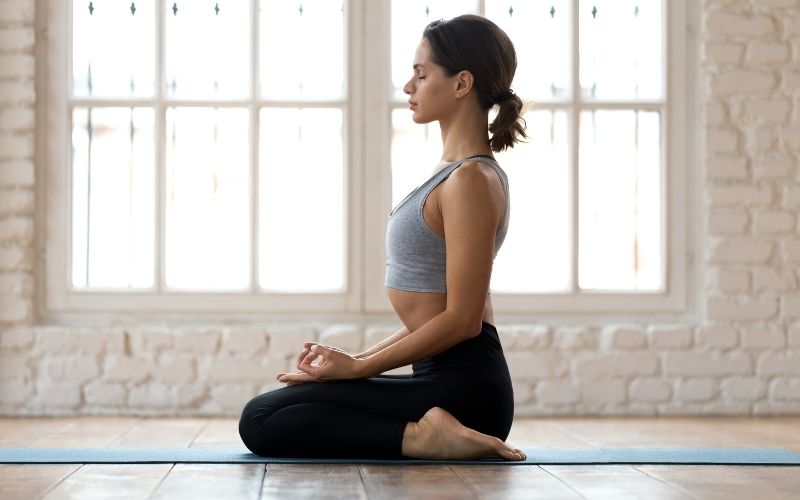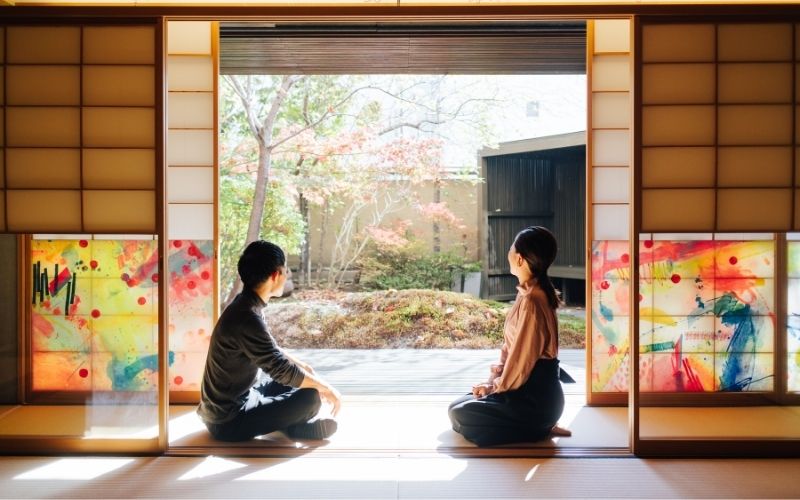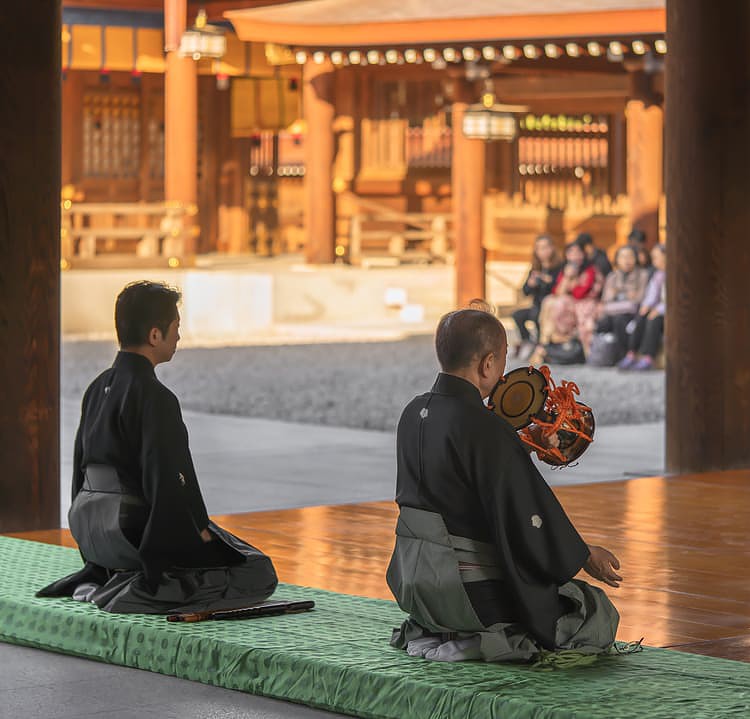The Japanese are known for their long life and good health, making them a model nation to follow for holistic lifestyles and healthy habits. One of the important facets of the Japanese way of living is sitting on the floor.
Sitting on the floor in the seiza position is common in traditional Japanese ceremonies, rituals, and gatherings. It is also an effective way to relieve pain in the back, neck, and improve spine alignment. Think of it as a small workout for our knees and ankles and a position that improves digestion, blood flow, and alertness.
If you are curious as to why the Japanese sit on the floor and how you too can do it for better health and well-being, keep reading for the full scoop.
Table of Contents
Why Do The Japanese Sit on The Floor?

The Japanese have long since mastered the art of correct sitting posture and practice it in their everyday lives. The Japanese way of sitting on the floor is called “seiza”, and it literally translates to “correct sitting.” That is how much importance they place on the right sitting postures.
To sit in the seiza position, you need to keep your spine erect and fold your legs beneath your body with your knees touching the ground, buttocks resting on your heels, and soles facing upward. The tops of the feet should lie flat on the floor, the ankles arranged in a “V” position, and the hands folded or placed on the lap with the palms facing downward.
Seiza symbolizes the values of attentiveness, respect, and devotion, as a person sitting in this position will not be able to get up quickly and attack someone.
Sitting in the seiza position on “tatami” or straw mats is commonly seen, even compulsory, in various social and formal gatherings in Japan, be it a tea ceremony, religious service, cultural performance, or casual visit. In fact, the Japanese sit in seiza even when they are at home or meditating alone.
Sitting in seiza on the floor also dismisses the need for chairs. It not only provides greater space for people to move around in a room but is also particularly useful in a public event where there may not be enough chairs for people. After all, if everyone sits on the floor, there is no need for chairs.
Is Sitting in Seiza Healthy?

You probably know already that the way we sit can impact our posture and overall health. Sitting right is important. Many problems that we suffer from today, such as chronic back pain, are on account of bad posture.
While sitting for long hours in front of our computer or laptop, we tend to slouch or hunch over our screens, causing strain on our backs and necks. Seiza helps to counteract the effects of poor sitting posture by improving our spine alignment. It stretches out our back, trains our core muscles, and relaxes the spine and back.
Sitting in seiza also makes it impossible to slouch, making this position a boon for our bodies that take the brunt of our long work hours. If you, like many others, suffer from poor posture and back pain, try sitting in seiza and see the wonders it does for your back.
Seiza also provides a good workout for our knees and ankles and keeps them healthy and flexible. According to Dr. Yoshiaki Mori, a professor of rehabilitative medicine at Showa University, the youth in Japan are becoming increasingly prone to an arthritic condition that affects the knees. This condition didn’t exist in the country until recently, but it is now quite common among the Japanese as most of them no longer sit on the floor in seiza.
Seiza is great for better blood circulation in the body and improved digestion. It also makes you feel a greater sense of calm and alertness, which is a major reason that the Japanese meditate in this position.
3 Comfortable Ways to Sit in Seiza on The Floor
Seiza may not be a comfortable sitting position for everyone. So we suggest three ways to sit in seiza without the cramps, numbness and tingling sensation that usually accompany this position.
#1. Remove your footwear outside. Get a “zabuton,” which is a small, cube-shaped cushion meant specifically for sitting in seiza. Approach the zabuton at a 45° angle and kneel down. You can then lower your buttocks on the heels of your feet and sit in seiza.
#2. If you don’t have a zabuton, you can still follow the above method without it. After sitting in seiza, keep shifting your position slightly or wiggling your toes a little whenever you begin to feel cramps, numbness, or other discomforts.
#3. Alternately, you can sit in the seiza position with your feet overlapping each other. In this method, the right big toe overlaps the left one, which helps to reduce numbness.
Often, women in Japan also sit in seiza with their bottom on the floor or on the zabuton instead of on their heels and shifting their feet to the size. Another position is sitting cross-legged, also called “agura” in Japanese, which is acceptable in homes but frowned upon in social or formal settings.
FAQ: Is It Rude to Sit Cross-legged in Japan?

Sitting in the “agura” or cross-legged position was common among Japanese warriors in the olden times, as it was easier for them to draw out their swords and attack their foes compared to when sitting in seiza.
So, we can safely say that it’s not compulsory to sit in seiza. Also, many people no longer sit in seiza regularly. So when they do try to sit in seiza, they find the position painful, making them prefer the more lax position of agura.
However, note that sitting cross-legged is frowned upon in traditional Japanese ceremonies and other formal settings. Also, if you are a woman wearing a dress or skirt, it’ll be better to stick to seiza instead of agura.
Conclusion
Correct sitting posture is a lost art that needs to be revived for better health and longevity. Sitting on the floor like the Japanese can be a great way to naturally relieve backache and improve posture and physical health.
Although sitting in seiza may be uncomfortable and even painful for some, many people wax eloquent on its myriad benefits. Some even claim it to be the most comfortable sitting position that is good for their overall health.
Have you tried sitting in seiza on the floor? How was your experience?

My name is Vance, and I am the owner of To Ergonomics. Our mission is to improve your workflow by helping you create a supportive and welcoming environment. We hope that you’ll find what you’re looking for while you’re here.

